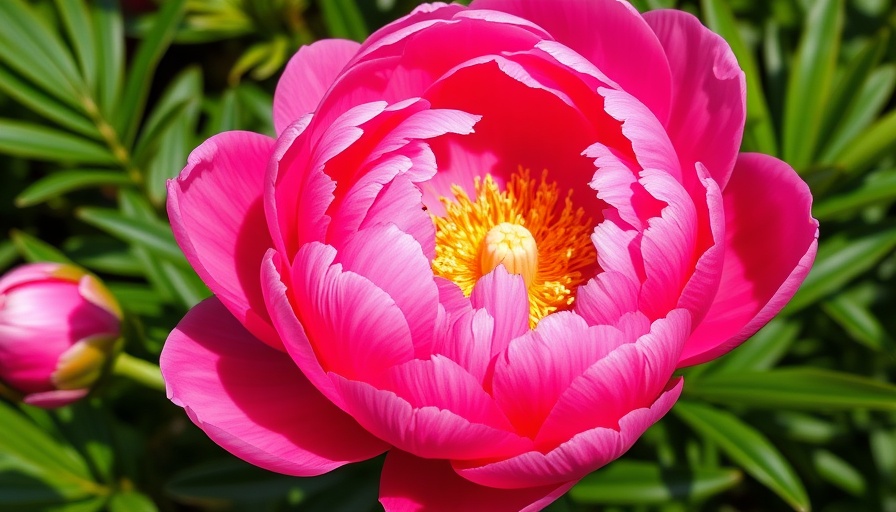
Unveiling the Beauty of Peonies in Your Garden
When envisioning a stunning garden, the perennial peony stands out as a timeless choice. These vibrant blossoms not only provide visual delight but are also steeped in history and cultural significance. According to ancient Greek mythology, the name "peony" derives from a tale involving the god Asclepius and his student Paeon, who was transformed into this beautiful flower. With a variety of colors and robust health, peonies are a staple for any home garden enthusiast.
Gardening Tips for Peony Enthusiasts
Planting peonies requires careful consideration for optimal growth. They thrive in USDA Hardiness Zones 3-8 and prefer full sun exposure for at least six hours a day. Planting them in well-draining, organically rich soil with a pH of 6.5 to 7.5 creates the perfect conditions for these magnificent blooms. It typically takes 2-3 years for peonies to mature, so patience is key!
Choosing the Right Cultivar
With over 30 species and varieties, selecting the right peony cultivar can be a delightful challenge. Some popular choices include:
- Paeonia lactiflora: Known for its large, fragrant blooms, perfect for cut flowers.
- Paeonia suffruticosa: Also called tree peonies, these perennial giants bring height and structure to your garden.
- Paeonia obovata: A rare species appreciated for its delicate blooms that appeal to collectors.
Essential Maintenance Tips
Taking care of peonies doesn’t have to be overwhelming. Here are some maintenance tips to ensure your blossoms remain lush and colorful:
- Watering: While peonies prefer medium water needs, it’s crucial to avoid waterlogging which can lead to root rot.
- Pruning: Post-bloom maintenance involves cutting back the foliage in late fall, ensuring robust growth for the following year.
- Fertilization: Use an organic fertilizer in early spring to rejuvenate the soil nutrients, helping peonies thrive.
Addressing Pests and Diseases
While peonies are relatively hardy, they can succumb to specific pests and diseases. Common issues include:
- Botrytis blight: This fungal disease manifests as brown spots on leaves. Preventive measures include ensuring proper air circulation and avoiding overhead watering.
- Peony thrips: Tiny insects that may damage the flower buds. Insecticidal soap can be an effective treatment.
Creating A Stunning Peony Display
To maximize the visual impact of peonies, consider planting them in groups or pairing them with contrasting perennials. Their bold blooms complement the delicate foliage of companion plants like daylilies or astilbes. Adding decorative elements such as garden art or trellises enhances the overall aesthetic of your garden.
Inspiring Future Generations
Engaging in gardening that includes peonies not only beautifies one’s home but also teaches valuable life skills. It nurtures patience, responsibility, and a deep appreciation for nature while promoting biodiversity and environmental awareness in younger generations. Sharing the joy of peony cultivation can inspire kids to connect with nature and understand the delicate balance of ecosystems.
Incorporating peonies into your garden landscape offers a blend of beauty and historical significance. As you plan your planting, remember to research different cultivars, maintain proper care routines, and consider the aesthetics of your garden space. With time, you’ll cultivate not just flowers, but lasting memories and connections with the natural world around you.
Feel inspired? Dive deep into gardening and unveil the therapeutic benefits it can bring to your life.
 Add Row
Add Row  Add
Add 




Write A Comment